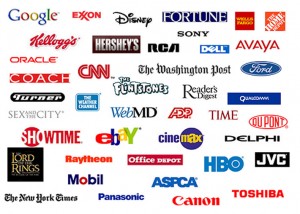After reviewing a few of my peer’s blogs, I discovered a very enlightening,
and refreshing post titled “A Colorful Impact,” by Aleksandar Novakovic. It illustrates the impact of corporate logos on consumer responses due to a simple thing known as colour. Consumer taste and preferences are constantly changing, therefore companies need to identify and take advantage of key psychological factors, such as the effects of different colours, that will cause consumers to create an emotional attachment to their brand. Companies are spending mass amounts of time and money developing and evaluating marketing research that will allow them to tap into consumer minds and understand their purchasing choices, evidently changing their marketing strategy accordingly.
In addition to colour, many companies have discovered the physiological effect of music on consumer’s buying behaviors. Research indicates that volume, speed and type of music can have profound effect on product preferences and brand loyalty. Consumers are much more likely to buy products when the music is either aligned with the product, or the product is advertised in conjunction with music they enjoy. Google and World Vision are perfect examples of companies who have used the psychology of music in their marketing strategy by pairing their brands commercial with emotionally stimulating songs. Google’s commercial for Google+ plays the song “Under pressure” by Queen and David Bowie as they present videos of the colourful, fun Muppet characters having a good time dancing and “just hanging out”. The song’s reference to being under pressure in various life situations, is offset by the happy, colourful Muppet’s which creates a sense of relaxation and comfort for the customer when they think of the Google brand. Similarly, World Vision, a not-for-profit organization, plays the song “In the Arms of An Angel,” by Sarah McLaughlin while showing tragic images of starving children living in Africa. The heartbreaking images paired with the sad music evoke an emotion in people to want to help. Emotional response can have a powerful impact on memory. Advertising that uses emotionally stimulating colour, music and powerful imagery can create a strong emotional response in the consumer. Numerous studies have shown that the most vivid memories tend to be of emotional events, which are likely to be recalled more often and with more clarity and detail than neutral events.


